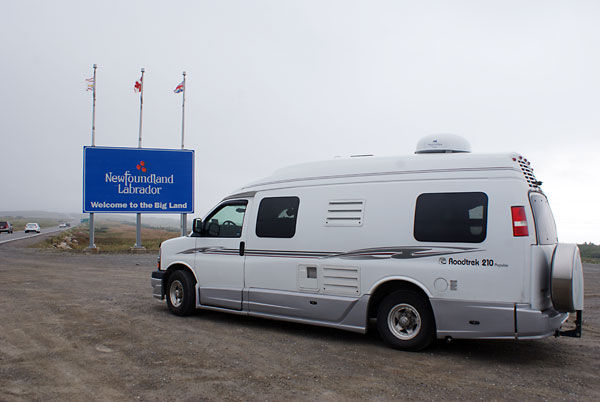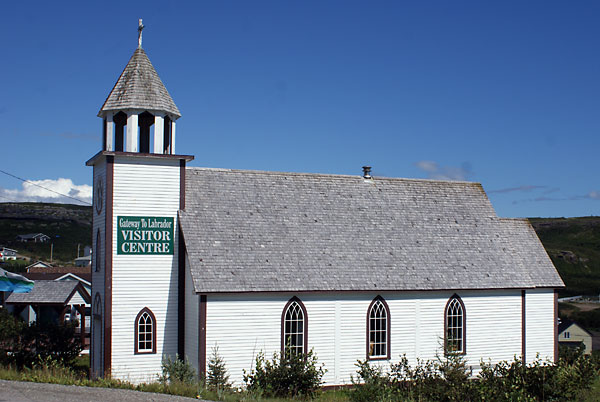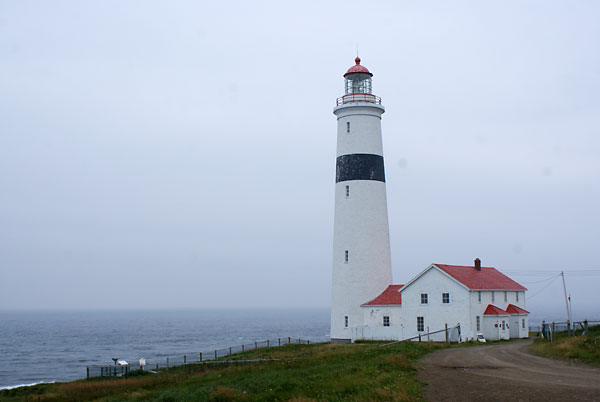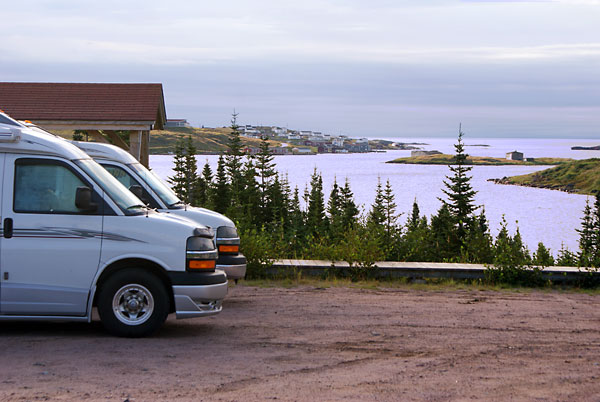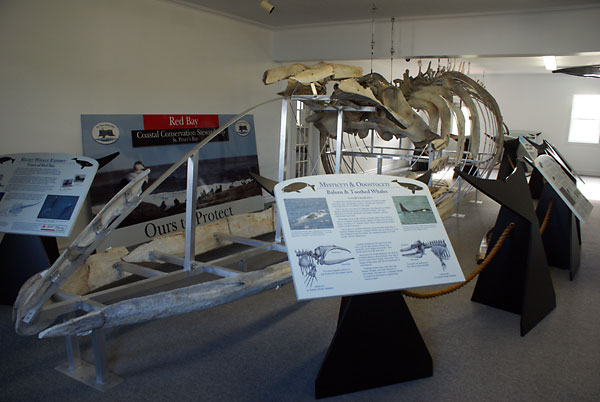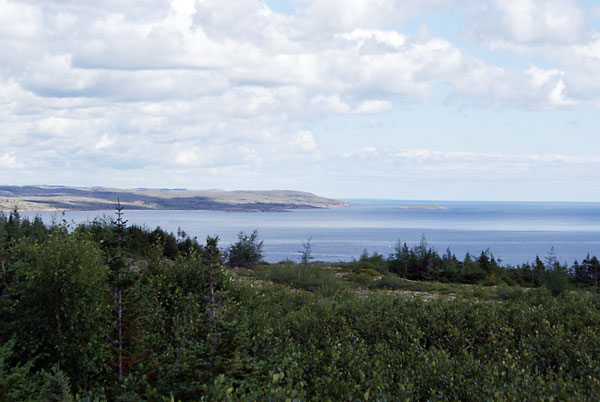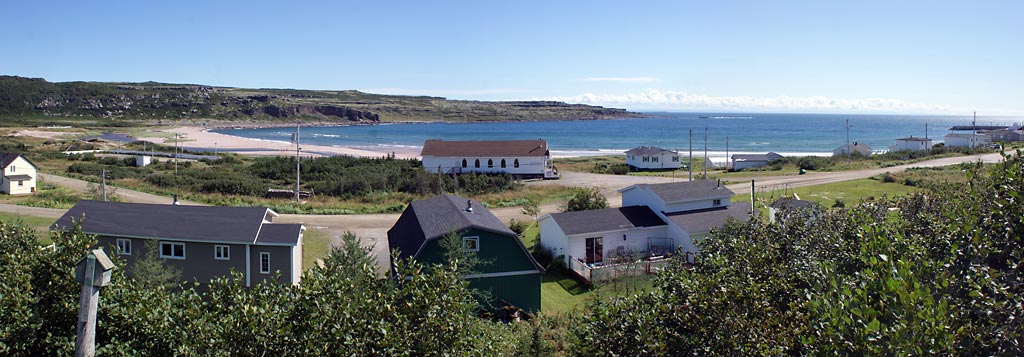
The village of L'Anse-au-Clair. Many of the coves had small villages in them.
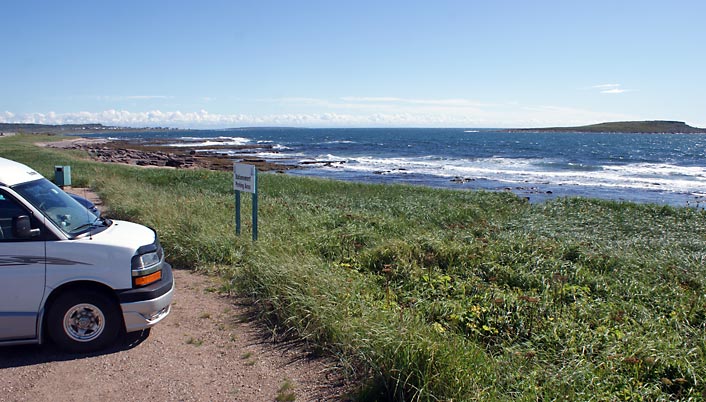
After Labrador, and before heading back to Newfoundland, we went into Quebec to see a puffin sanctuary near Lourdes-de-Blanc-Sablon. The puffins are on the island about a mile offshore. An observatory platform at the turnout had a telescope for viewing the puffins, but they were still too far away to see very well. But it was a good place to spend the night before catching the ferry back to Newfoundland the next day.

The ferry coming in to Blanc Sablon.
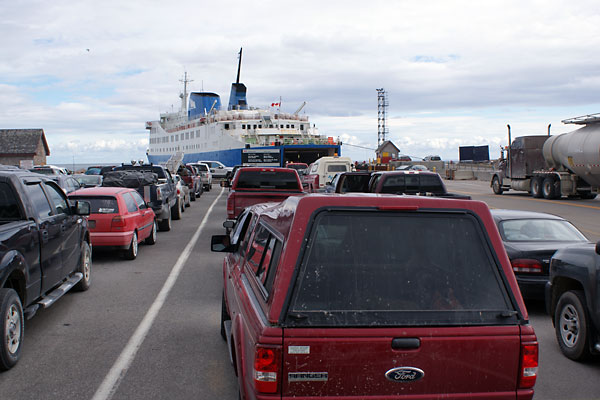
Waiting in line to board the ferry for the return trip to Newfoundland. The ferry ride lasted about an hour and 45 minutes. The ferry is heavily subsidized by the government; our cost (for the Roadtrek and the two of us) was only $27, which is a real bargain.
